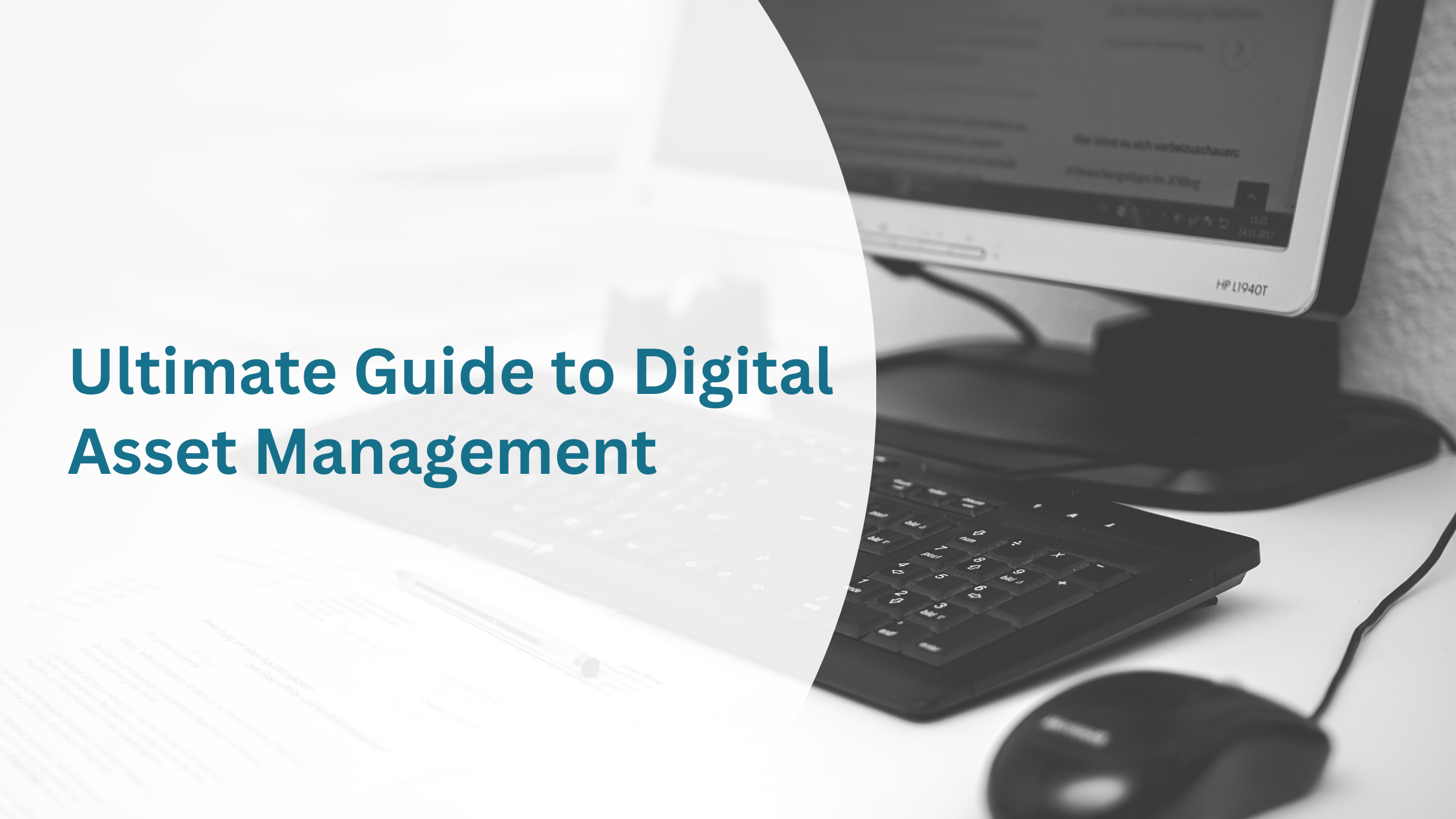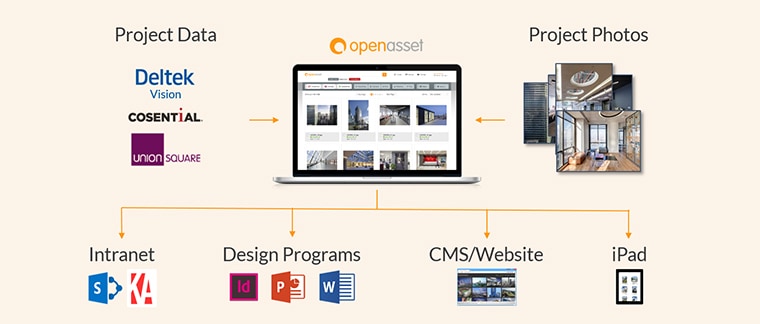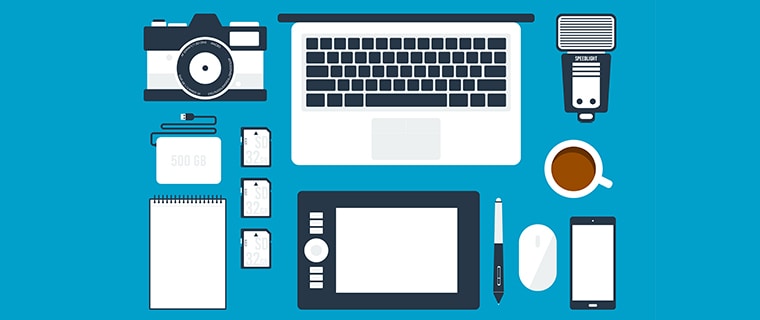Proposal Efficiency 101: Practical Methods to Streamline Workflows
Jul 21, 2025
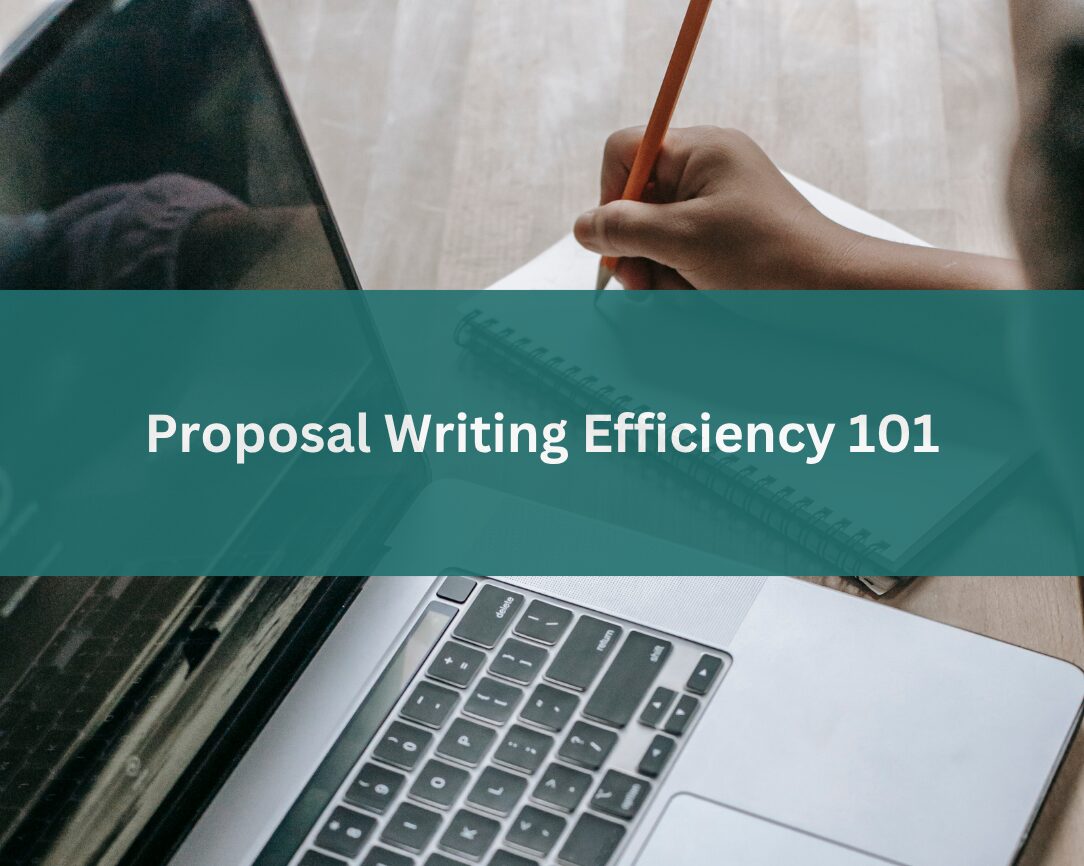
Proposals are time-consuming, and in most firms, the process is messier than it needs to be.
Content lives across different drives. Teams chase down resumes at the last minute. Review cycles drag on.
And somehow, despite all that effort, proposals still go out the door just minutes before the deadline. Sound familiar? You’re not alone.
Proposal inefficiency is one of the biggest pain points for AEC marketers and one of the hardest to fix. In this guide, we’ll break down where most teams lose time, how to spot the red flags, and what changes can help you improve proposal efficiency.
TL; DR: Click Here for What You Need to Know
- Most firms spend 960+ hours a year on proposals, yet only 25% hit all their submission goals.
- Top blockers? Content chaos, too many reviewers, and busy SMEs.
- When assets are in random folders or old proposals, teams waste hours trying to find what they need.
- Proposal tools like Shred and OpenAsset help automate manual work, personalize faster, and cut review rounds.
Why Is It Important to Have an Efficient Proposal Process?
An efficient proposal process saves you time and makes your team more competitive. Streamlined workflows help you deliver higher-quality proposals faster, reduce stress, and win more of the right work.
Here’s why proposal efficiency matters:
Win More Bids and Increase Revenue
The faster and more accurately your team can respond to RFPs, the more chances you have to win new business. Efficient processes free up time to focus on other parts of the proposal, like tailoring content to the client’s needs or improving your win themes. This strategic focus leads to stronger proposals and better results.
Cost and Time Savings
According to OpenAsset’s State of Proposals in AEC Marketing, only 25% of proposal teams consistently meet 100% of their submission targets. This means most teams are constantly playing catch-up.
Streamlining your workflows through automation, templates, or better content organization helps reduce the hours spent on each proposal. This means more time for quality control, collaboration, or even more bids.
Maximizing Team Capacity
Marketing teams are often wearing multiple hats. In fact, 71% of marketers say they’re responsible for proposal accuracy, and 63% also act as the “project manager” of each proposal. When your systems are inefficient, valuable time is lost to searching for the latest resume or cleaning up formatting.
Simplifying and automating these tasks means teams can get more done without working longer hours.
Reduce the Likelihood of Last-Minute Errors
Rushing leads to mistakes, and 64% of teams still submit proposals on the day they’re due. An efficient process gives your team the breathing room to review, revise, and refine before hitting “send.” The extra time often makes the difference between a good proposal and a winning one.
Maximize Time Spent on Tasks Requiring Human, Strategic Thinking
Proposal writers and marketers shouldn’t spend hours copying and pasting project descriptions or updating resume formatting. Tasks like these are repetitive, time-consuming, and not where your team adds the most value. Remove the manual work with AI and automation tools, so you can spend more time crafting strategy, customizing messaging, and building winning proposals.
“Instead of searching through documents, AI can surface content that would take you minutes or hours to find.” —Eric Liou, Chief Product Officer, OpenAsset
Boost Internal Satisfaction and Team Morale
Your team suffers when there is a chaotic process. Missed deadlines, late-night rushing, and unclear expectations wear people down. But when things run smoothly, everyone benefits: collaboration improves, burnout decreases, and teams are more likely to stay engaged and motivated. An efficient proposal process supports your people.
How Do I Measure Proposal Efficiency?
Proposal work is a serious time investment. According to OpenAsset data, most firms, no matter their size, spend at least 960 hours per year on proposals. That’s nearly six months of full-time effort from a single team member. With that kind of time commitment, knowing how efficient your process is (or isn’t) becomes essential.
So, how do you measure proposal efficiency?
Here are a few key metrics to track:
- Time to complete a proposal: How long does it take from RFP receipt to submission? Can you spot bottlenecks?
- Win rate: What percentage of submitted proposals result in a win? Are the right opportunities being prioritized?
- Volume of proposals submitted vs. targeted: Are you meeting your internal submission goals?
- Rounds of revision per proposal: Frequent revisions often signal issues with clarity, collaboration, or content organization.
- Hours spent per proposal: Compare this to industry benchmarks to identify opportunities for streamlining.
Pairing these metrics with quality feedback from marketing, business development, and SMEs can also help reveal deeper issues.
What Challenges Impact Proposal Efficiency?
Even the most experienced teams run into challenges during the proposal process. Many factors slow things down. The good news is that once you can name the challenges, it’s easier to fix them.
Here are some of the challenges AEC marketers face during the proposal process:
Different Proposal Requirements
Not all RFPs are created equal. Some want strict formatting, others want detailed RFP resumes, project sheets, or compliance details. Trying to meet different criteria from one proposal to the next makes it harder to build a repeatable process. Instead, teams are stuck adjusting templates, searching for specific content, and customizing every deliverable from scratch.
Difficulties Finding the Assets Needed for Proposals
One of the biggest blockers is simply tracking down what you need. Content stored across drives, past proposals reused inconsistently, and team members working from different templates are all part of a messy proposal process. And when content is spread across platforms, it takes longer to build strong, consistent proposals.
The best systems bring everything together. When content is organized, searchable, and tagged, teams can find what they need in seconds. But what system makes a meaningful difference? A digital asset management (DAM) system.
A DAM system helps you find the right assets by organizing and putting the most relevant content quickly.
Proposal Stakeholders & Subject Matter Experts (SMEs) Are “Too Busy”
Even with a solid outline and timeline, proposals still rely on input from technical experts, team leads, or execs. But they are usually “too busy”. And when their input is delayed, the entire proposal slows down.
According to proposal expert Rachelle Ray, heavy reliance on SMEs for content creation is a proposal inefficiency that increases cost and diverts resources. Creating smoother collaboration workflows can help.
Too Many Rounds of Revisions Cause Delays
Feedback is important, but going back and forth can stall progress. In fact, 87% of proposals go through two to five rounds of review. That’s a lot of time spent editing the same sections over and over.
When multiple reviewers are involved, version control becomes essential. Without it, comments get lost and inconsistencies happen. Centralizing feedback and establishing approval steps helps speed up the process and reduce rework.
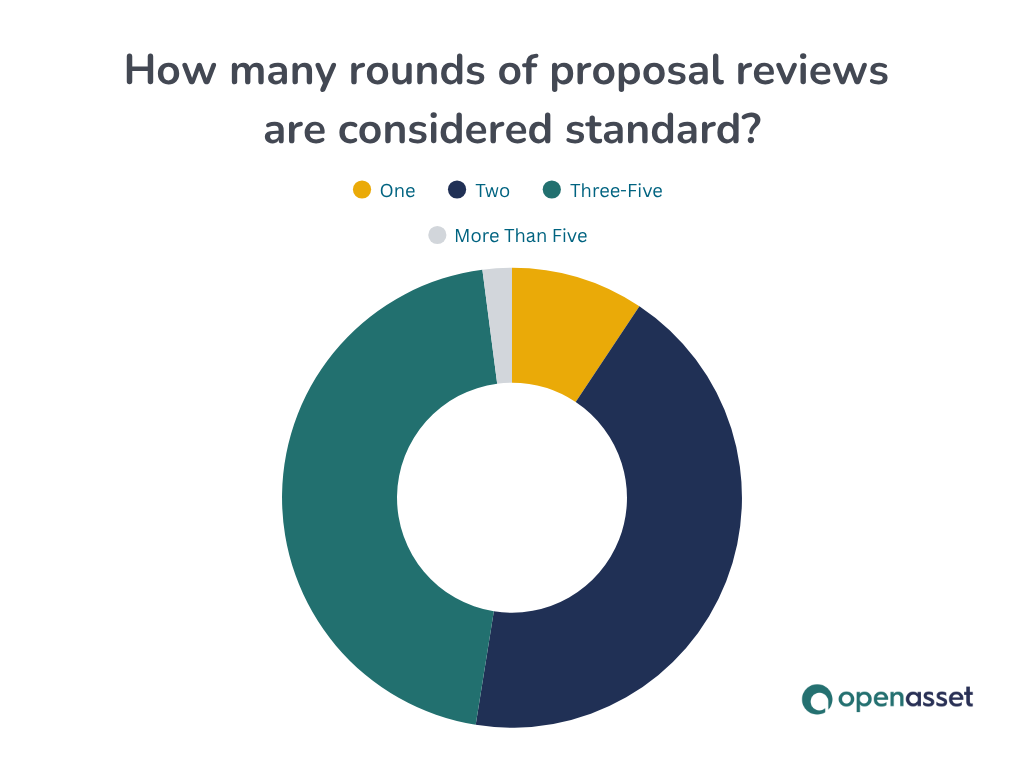
How to Improve Proposal Efficiency
Improving proposal efficiency means removing the factors that slow down your team. With the right tools and habits in place, you can spend less time searching for content or editing drafts and more time crafting strong, strategic proposals.
Here are a few smart ways to make that change:
1. Repurpose Content From Past Proposals
If your team is still writing proposals from scratch, you’re not alone. 51% of firms still write proposals from scratch, “sometimes.” But starting from a blank page every time is a missed opportunity.
Past proposals hold a lot of reusable value. The right AI systems will recommend relevant content based on what’s worked before. You can pull up already existing content, like firm bios, project sheets, and boilerplate sections, and customize.
Past proposals hold a lot of reusable value. The right AI proposal writing tools will recommend relevant content based on what’s worked before. You can pull up already existing content, like firm bios, project sheets, and boilerplate sections, and customize
Hand-picked related content: Looking for quick AI prompts you can copy and paste for key proposal tasks?
2. Have a Searchable Content Library With Digital Asset Management Tools
One of the fastest ways to improve proposal efficiency is to make content easier to find. But, only 36% of firms have a searchable, scalable library for their proposal materials.
Instead of searching through folders or copying from old files, a centralized DAM platform quickly pulls up the right bios, images, and project descriptions. When everything is tagged, visual, and version-controlled, there’s less duplicated work and everyone saves time finding the right content.
3. Version Control and Managing Reviews
Too many proposal reviewers? It happens in almost every proposal cycle. As drafts move between contributors and reviewers, it’s easy to lose track of the latest version or, worse, reintroduce outdated content.
That’s why version control is important. With a shared system that tracks changes, organizes assets, and gives everyone access to the same up-to-date files, you can avoid confusion and reduce the number of revisions.
DAM tools like OpenAsset support this kind of collaboration, so teams move faster while maintaining quality.
4. Use Tools to Scale Content Personalization
Templates are a time-saver, but clients still expect every proposal to feel tailored to them. This is where content personalization becomes critical.
Instead of customizing everything manually, smart tools can help fill in the gaps. For example, the right AI proposal tools can pull in project details based on metadata or recommend copy based on similar client goals. You get the personal touch without starting from scratch every time.
5. Use and Standardize Proposal Templates
Templates also reduce confusion. When everyone’s building proposals from the same starting point, it’s easier to maintain consistent branding, structure, and messaging. Pre-approved templates help your team’s content move faster and avoid formatting mistakes. It also means less time fixing inconsistencies right before a deadline.
6. Leverage AI Proposal Tools
AI isn’t here to take over proposal writing, but it is becoming a valuable assistant in your process.
“AI is like a very smart, trusty companion… That’s why a lot of products are branded as assistants or co-pilots.”—Eric Liou, Chief Product Officer, OpenAsset
It can help summarize long RFPs, identify key requirements, or generate a first draft of a standard section.
AI proposal tools like Shred.ai give teams a head start on repetitive tasks, so more time goes into strategy and messaging. The result of less manual work and more high-impact thinking is a major win for proposal teams.
“Our expansion with Shred.ai into AEC proposal management isn’t just about adding a product. It’s about solving the full set of challenges AEC marketers face every day. This marks a new milestone in OpenAsset’s commitment to creating a purpose-built platform for the AEC industry.” – Jason Janicki, CEO, OpenAsset
Hand-picked related content: Want to stop wasting time on low-fit RFPs?
8. Proposal Team Training
What’s the point of having the best tool if no one knows how to use it?
Ongoing training teaches your team how to use templates, manage content, and strategically respond to RFPs. It also helps keep everyone up to date on brand guidelines, compliance standards, and industry expectations.
Formal training and short refreshers go a long way. When your team feels confident and aligned, you create winning proposals.
9. Identify and Replicate What Works
Only 40% of firms consistently conduct a win/loss analysis when a job is won. That’s a missed opportunity to learn what’s working—and what’s not.
Teams can make smarter decisions by capturing insights from both wins and losses and linking them back to specific content or strategies. When that content is tagged by pursuit type or outcome (something a DAM system can support), you build a feedback loop that helps every proposal get a little better.
10. Proposal Resource Management
Proposal work involves many roles: marketing, business development, technical SMEs, and executives. Without a clear plan for who owns what, it’s easy to lose track of responsibilities or overwhelm key contributors.
Start by mapping out roles for each stage of the proposal. Make it clear who’s drafting, reviewing, and approving what, and when. This helps avoid rushing and makes better use of your team’s resources.
11. Automate Repetitive Steps in Your Workflow
Manual formatting and searching for files takes hours that your team could spend on strategy. Automating those tasks gives you that time back.
With smart DAM features, you can auto-generate team sheets, pull in visuals based on project tags, and pre-fill commonly used sections without digging through folders or recreating layouts.
A smoother workflow that saves time and reduces stress? Who wouldn’t want that, especially when deadlines are tight?
FAQs
Still have questions? Here are some of the most common questions teams ask when trying to streamline their proposal process:
How can I tell if my proposal process is inefficient?
You may have an inefficient proposal process if your team is missing deadlines, constantly redoing work, or struggling to find the right content. Frequent last-minute submissions and low win rates are also red flags.
How do I overcome an inefficient proposal process?
To overcome inefficiency, start by identifying bottlenecks. This can be missing content libraries or too many review rounds. Then introduce tools that help automate tasks, improve collaboration, and reuse strong content.
What’s a realistic proposal win rate to aim for?
A realistic proposal win rate depends on your industry, but many firms aim for 30–50%. The key is to focus on high-fit opportunities and improve your process over time.
How much time should a business proposal take to create?
According to our research, 50% of firms report taking 2-4 weeks and 36% report taking less than 2 weeks to create a proposal. However, this depends on complexity. Teams that reuse content and streamline reviews can significantly cut this time.
Should I use AI to help with business proposals?
Yes, AI tools can support proposal teams by summarizing RFPs, generating drafts, and suggesting reusable content. This frees up time for strategy and customization.
How do I reduce the number of revision rounds in proposals?
To reduce revision rounds, use templates, establish clear roles, and centralize content. Tools with version control and shared access also help teams align.
Work Smarter With OpenAsset + Shred.ai
If proposal chaos takes over your day, it’s a content problem. The firms that win consistently have two things in common: smart asset control and a fast way to spin those assets into client-ready stories. That’s exactly where OpenAsset and Shred.ai come in.
OpenAsset handles the first half of the equation. It keeps every project image, resume, and project sheet in one searchable place, tagged by the details you care about. No more late-night searching for “final_final_v3.jpg.”
And Shred tackles the second half. It pulls the right pieces forward, quickly fills the blanks with AI, and flags low-fit pursuits. Together, they help you move from last-minute stress to a proposal process that runs smoothly.
“My best advice would be to embrace the technology and use it as an asset, for lack of a better term, rather than seeing it as a threat—’cause regardless of whether or not we embrace it or not, AI is here, and it’s just going to get better and better with each passing day, with each passing week.”—Eric Liou, Chief Product Officer, OpenAsset
Bottom line: you already have the expertise to win; you just need technology that brings it all together. Ready to see the difference?


